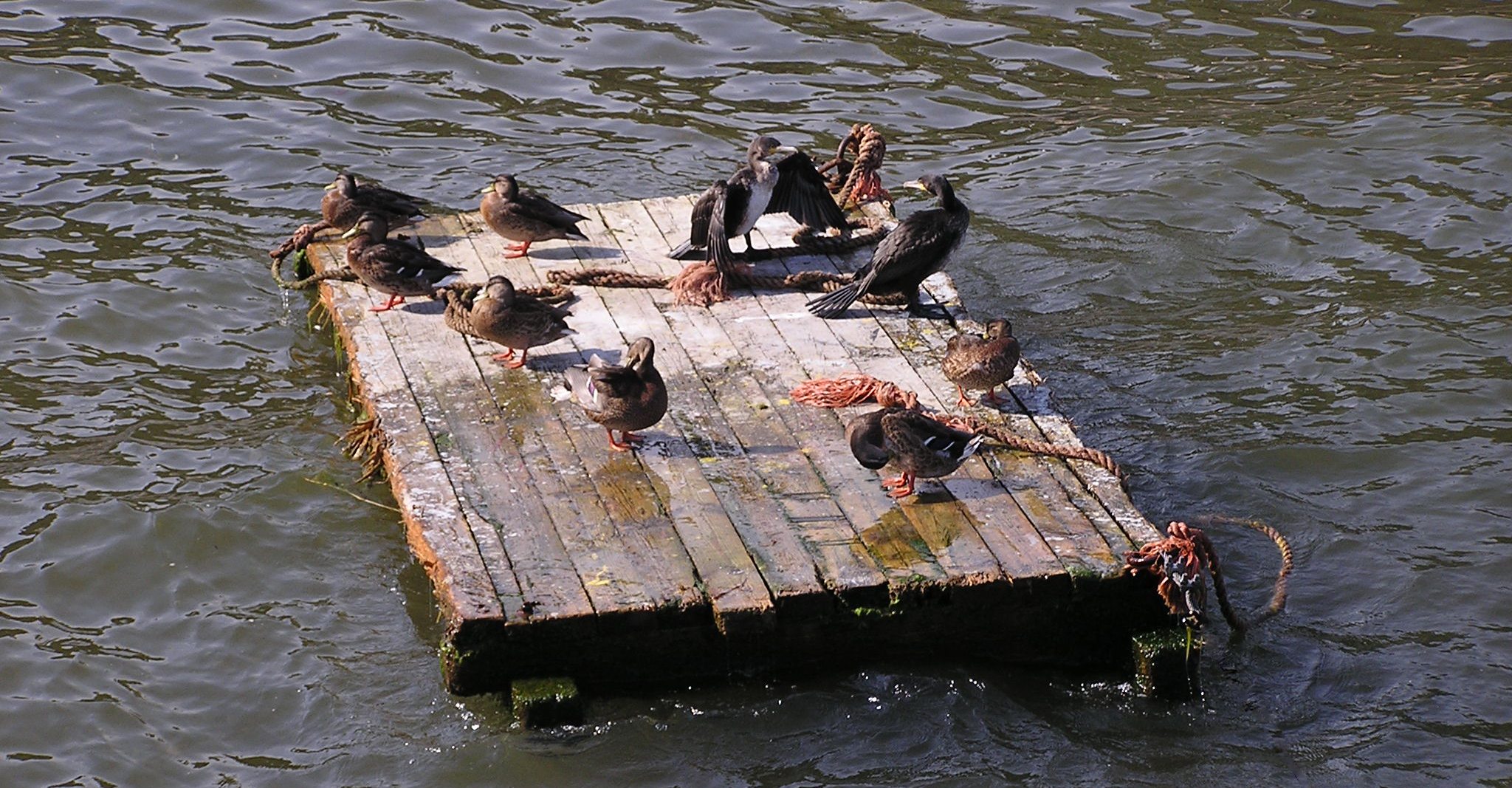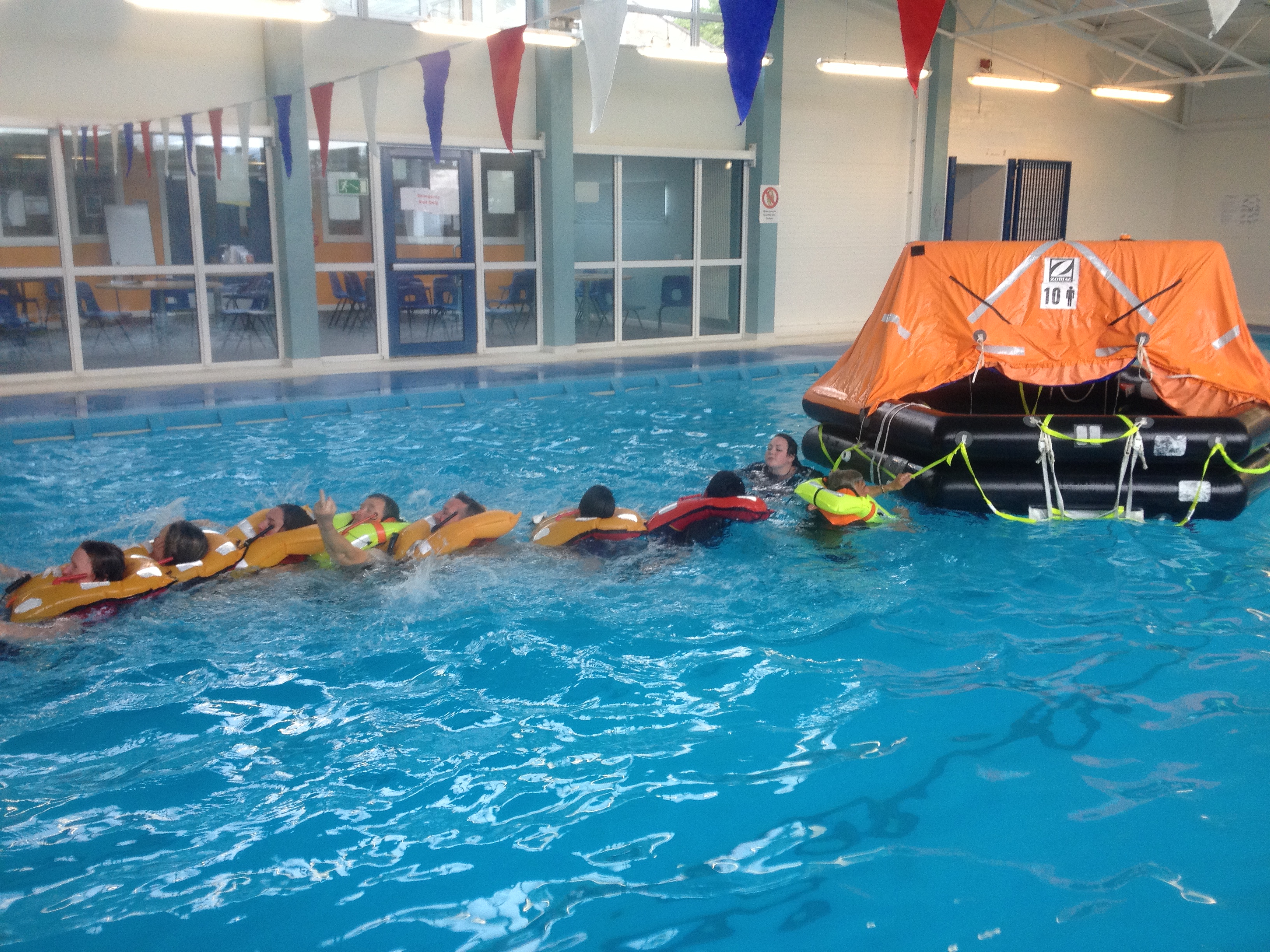RYA Sea Survival

Classroom
This course was our RYA Sea Survival training, a one day course which forms a mandatory part of our race preparations and is completed as part of the Level 2 training.
A lecture session in a very cold classroom was delivered to the two Level 2 crews booked for that day, by a very knowledgeable former Royal Naval storesman. We were all very relieved when the school caretaker finally turned on the heating. We had left all our layers and thermals on the boats!The afternoon session was practical, in a swimming pool. Dressed in a swimming costume covered with a t-shirt and shorts – if you’d read your joining instructions properly and brought some that is – we were asked to add a lifejacket and blow it up. Then jump in the pool and try to float face down. Impossible. And swim on our front. Impossible. We were taught to swim on our backs, using a modified olde English backstroke. The thinking being that in a real situation our arms would be quite unencumbered, whereas our legs would have several layers of clothing, foulies and boots, all combining to make kicking quite difficult!
The instructors left one poor guy swimming in circles, neatly demonstrating at least to the rest of us the need to look over your shoulder to see that you are in fact getting closer to the liferaft. He was going in circles because one arm was stronger than his other.
Once we had got used to swimming alone, we swam as a crocodile, hooking our feet under the next person’s shoulders and using our arms.
Then it was time to play with a liferaft – launching it, righting it, anchoring it with its drogue, and the really hard bit: getting into it.
I am pleased that I had to do this training. I guess like all of us I hope I never have to put it into practise.
But I also know that if I ever do have to do it for real, the first time fighting to get into the liferaft won’t be in tossing seas and heavy weather.
Tips
- Never step down into liferaft ie stay with your boat as long as possible
- consider face visor on lifejacket to prevent sea spray getting into nose and mouth causing a form of drowning


